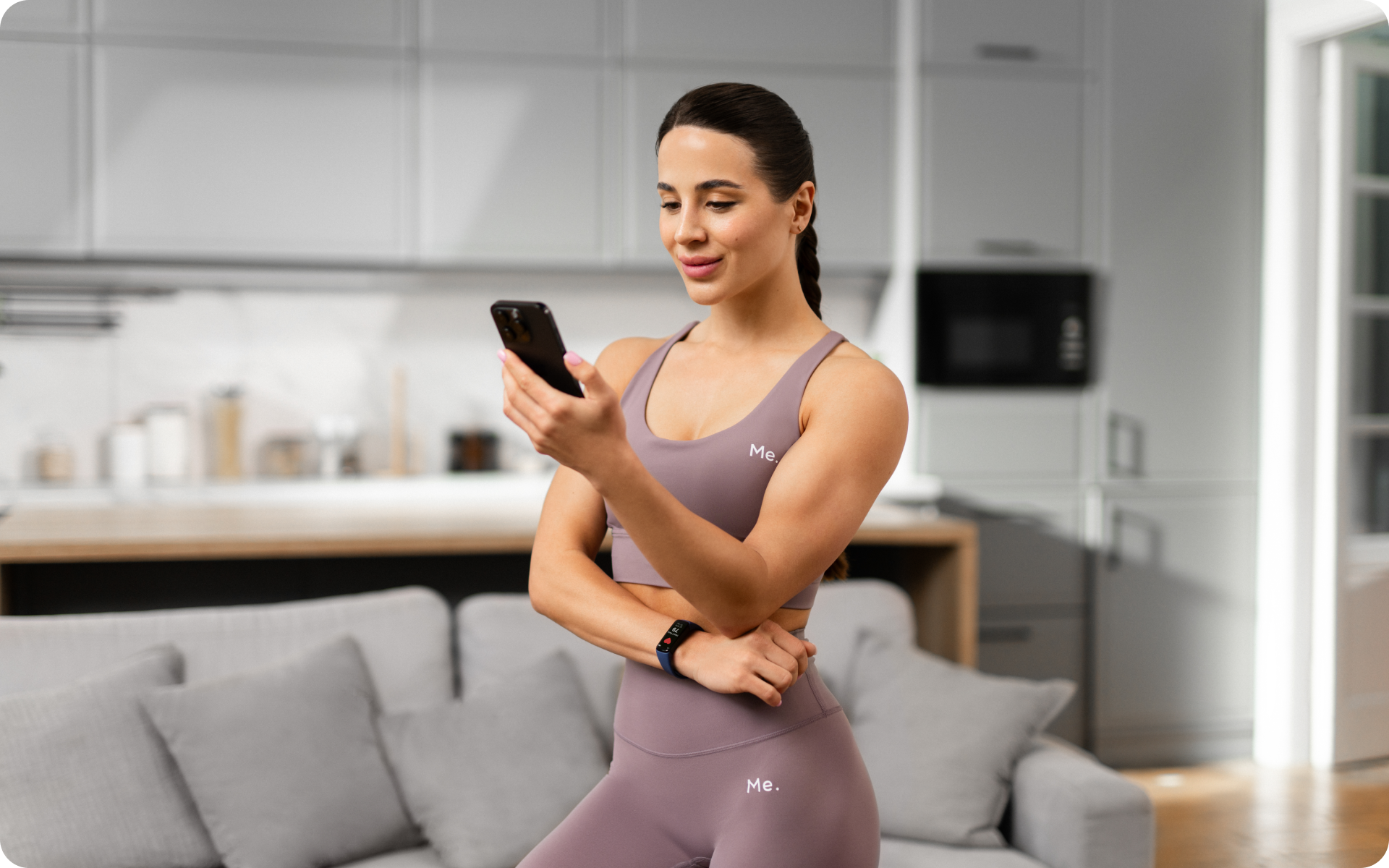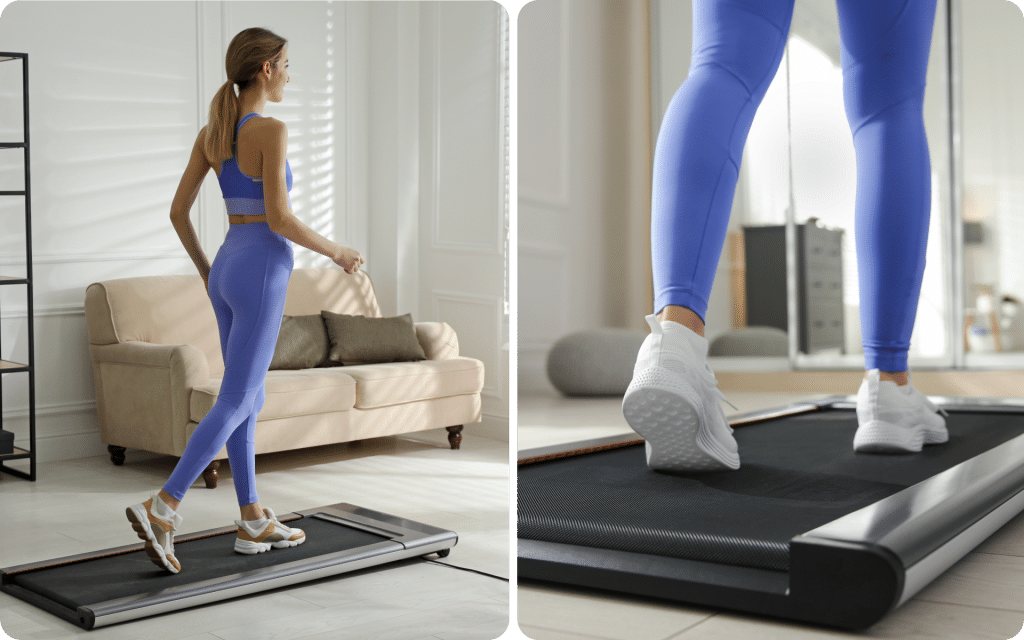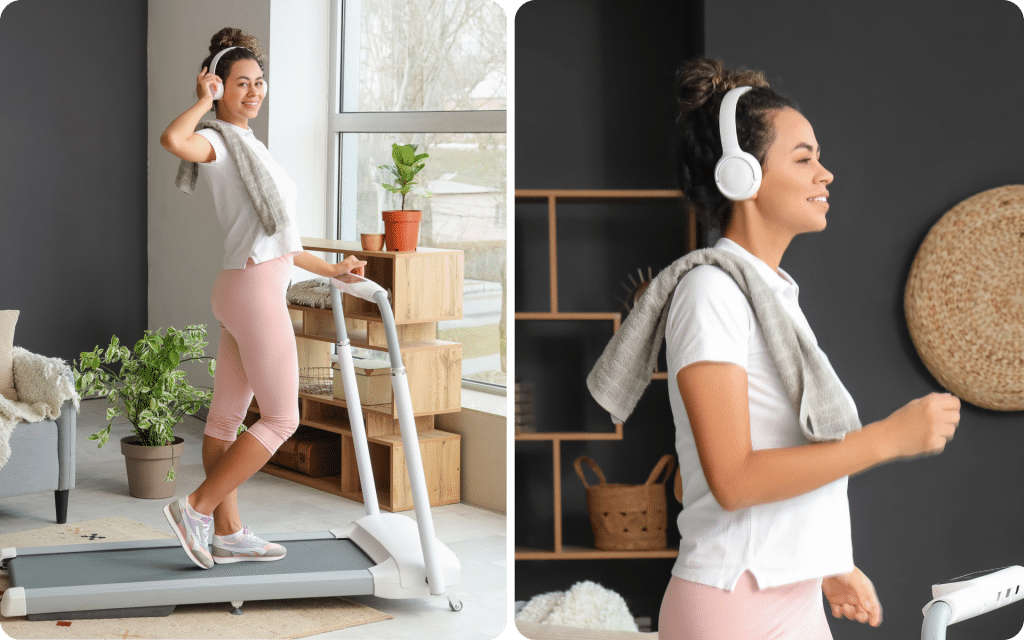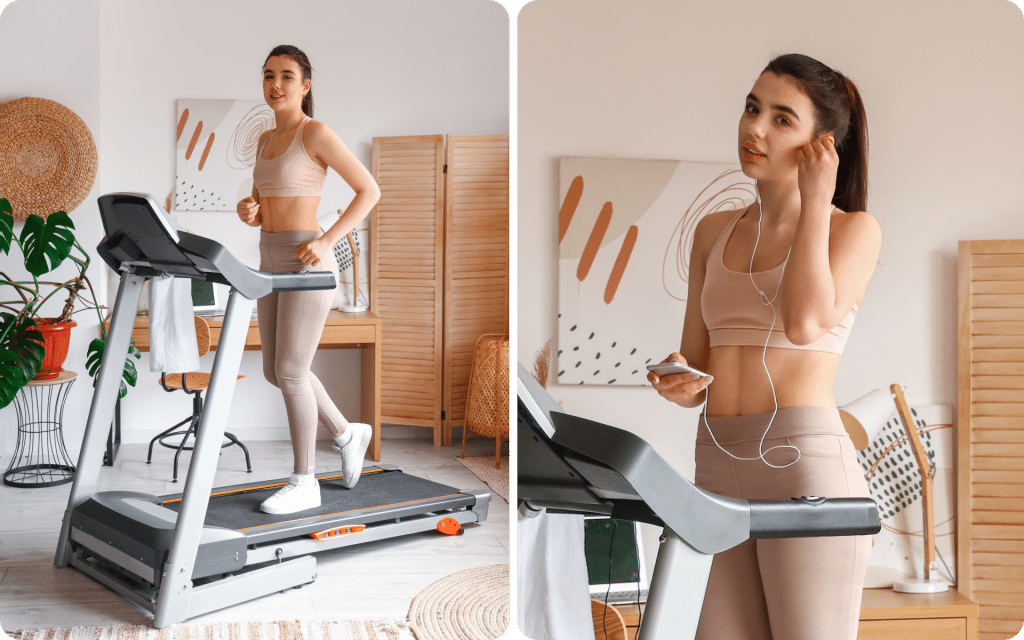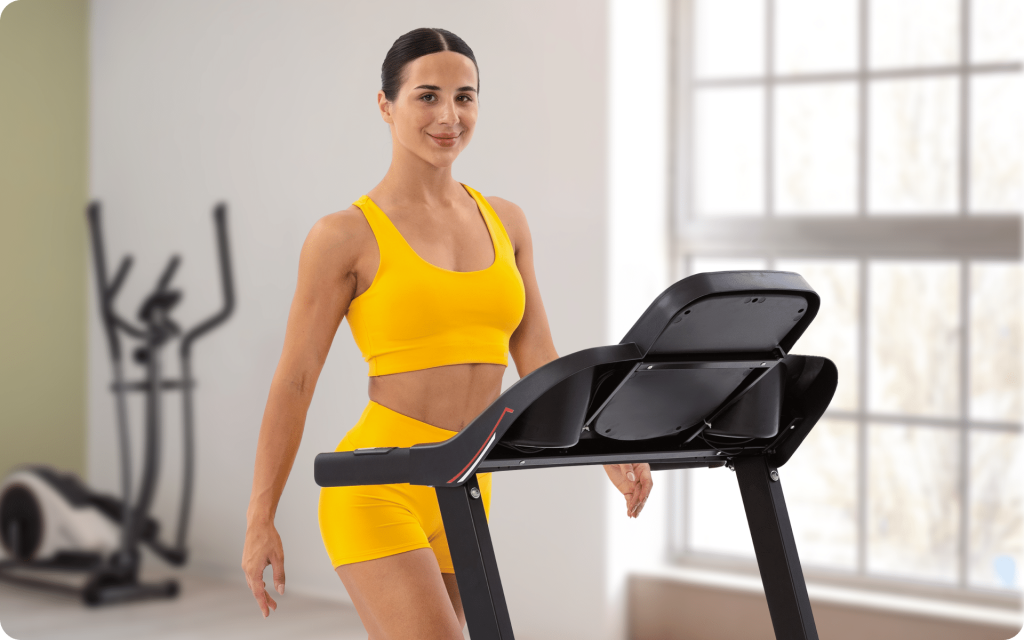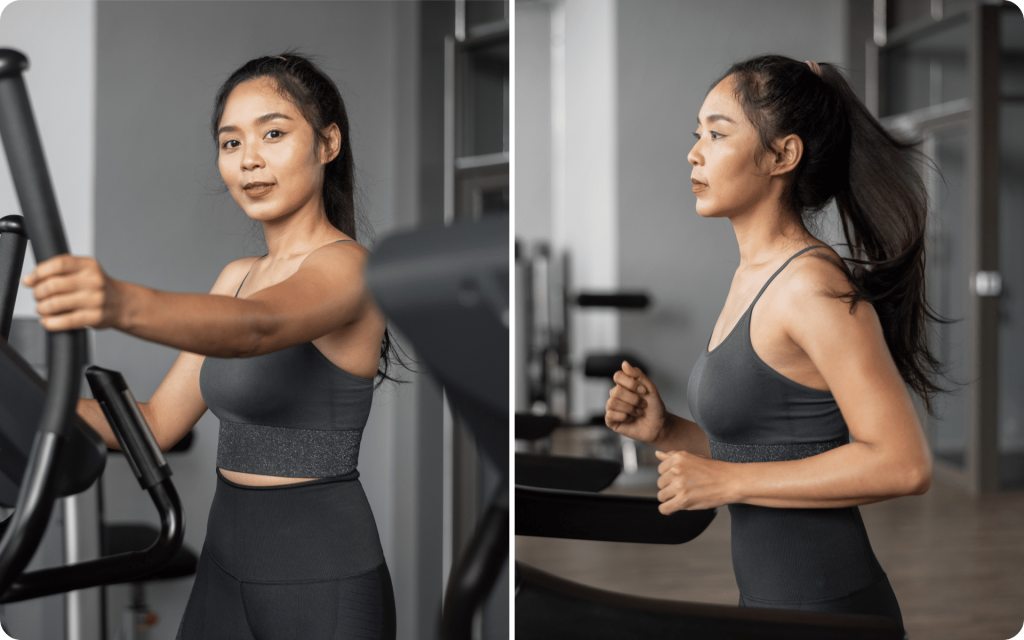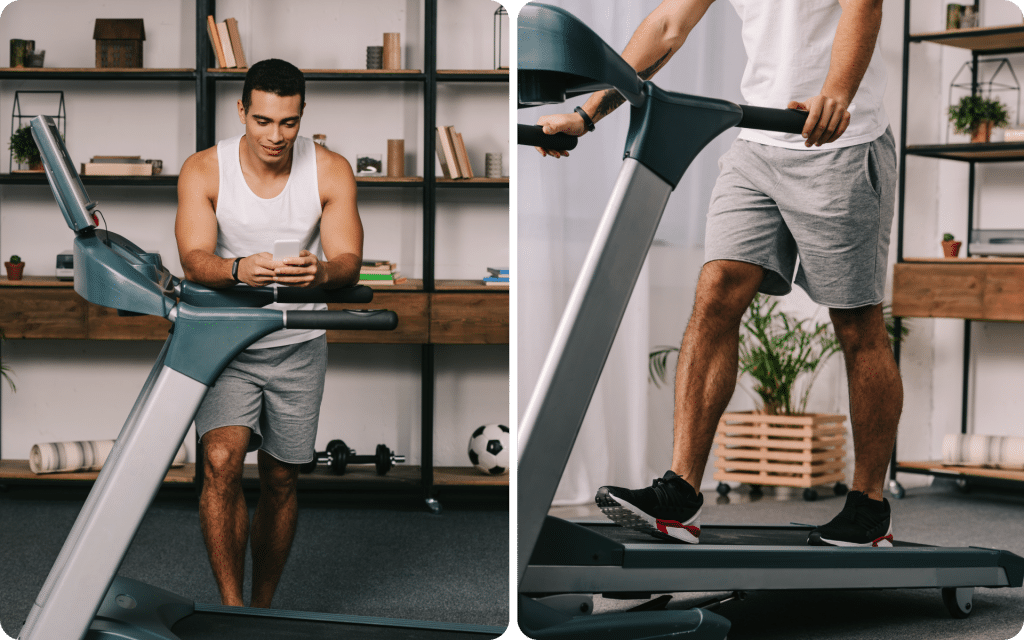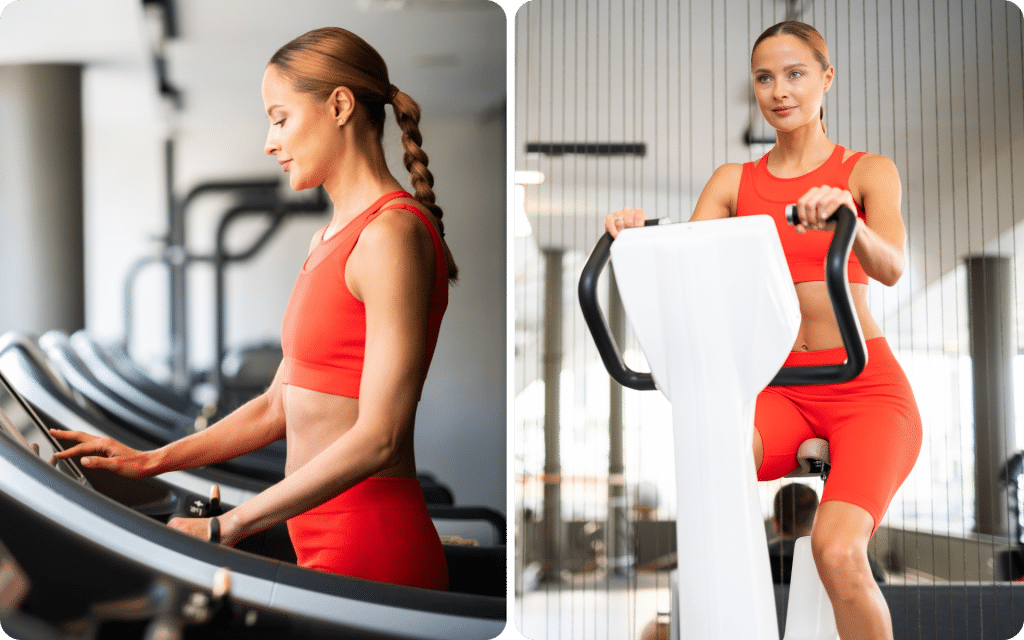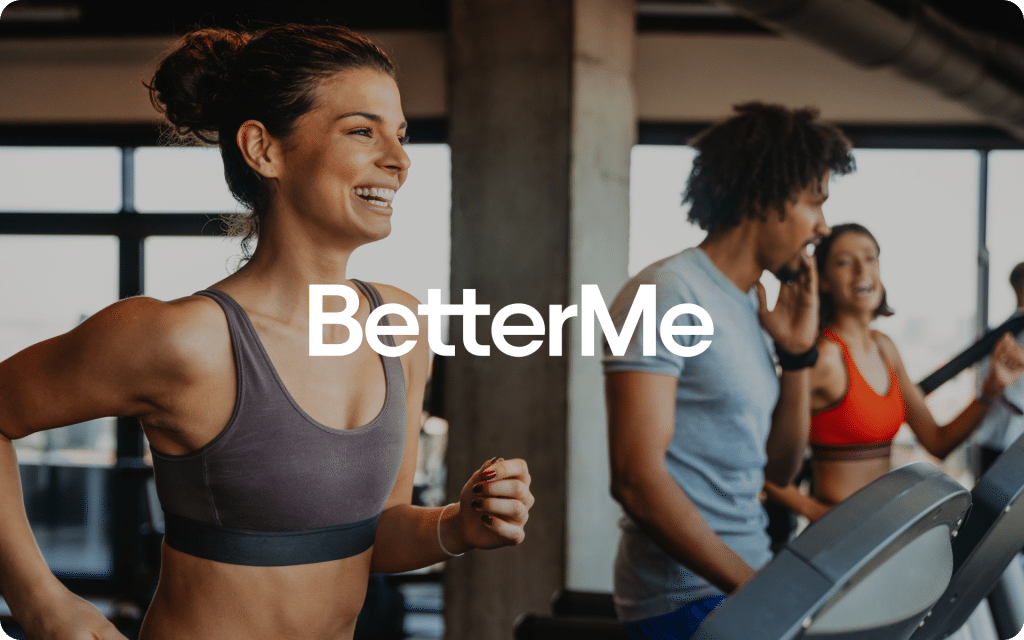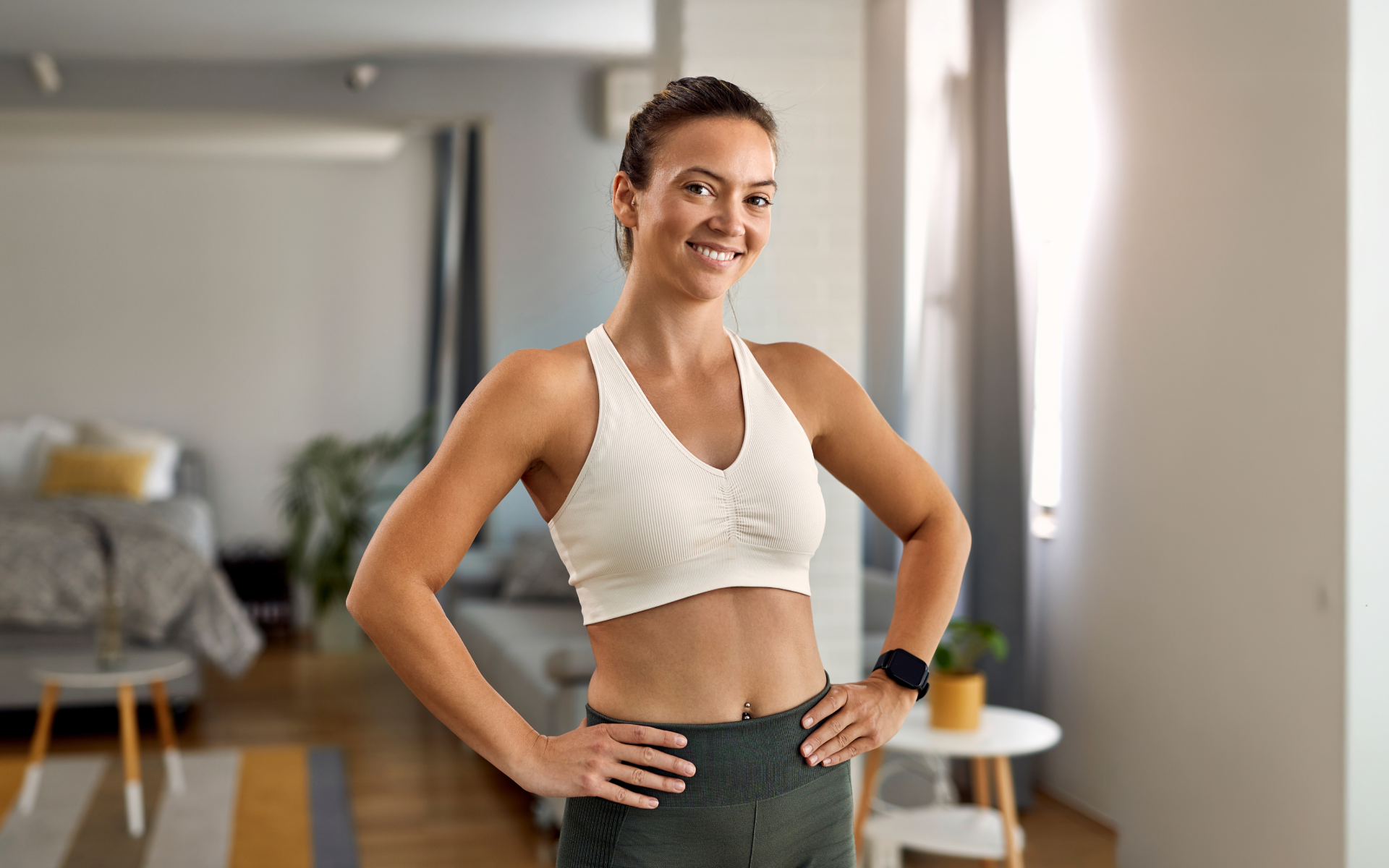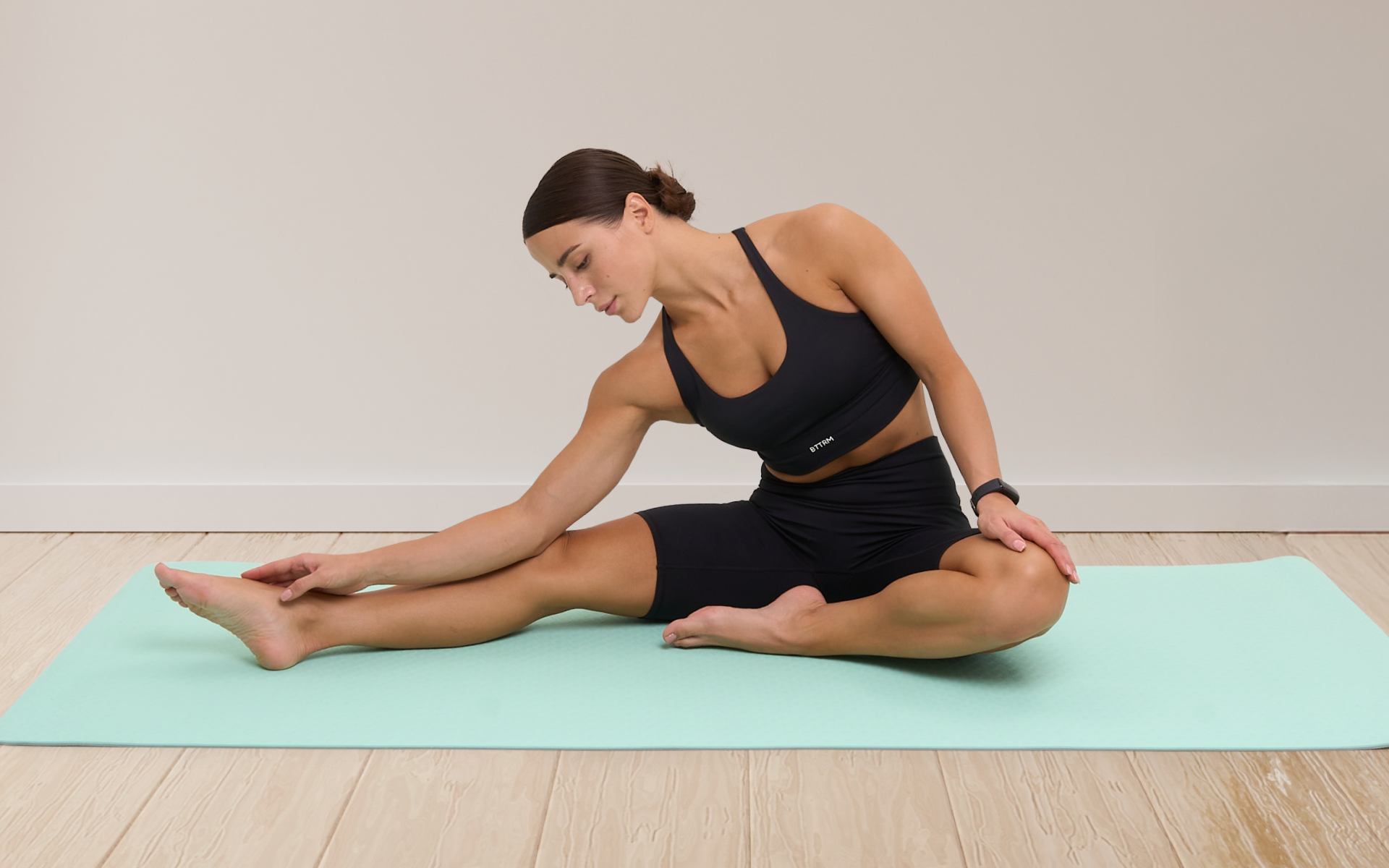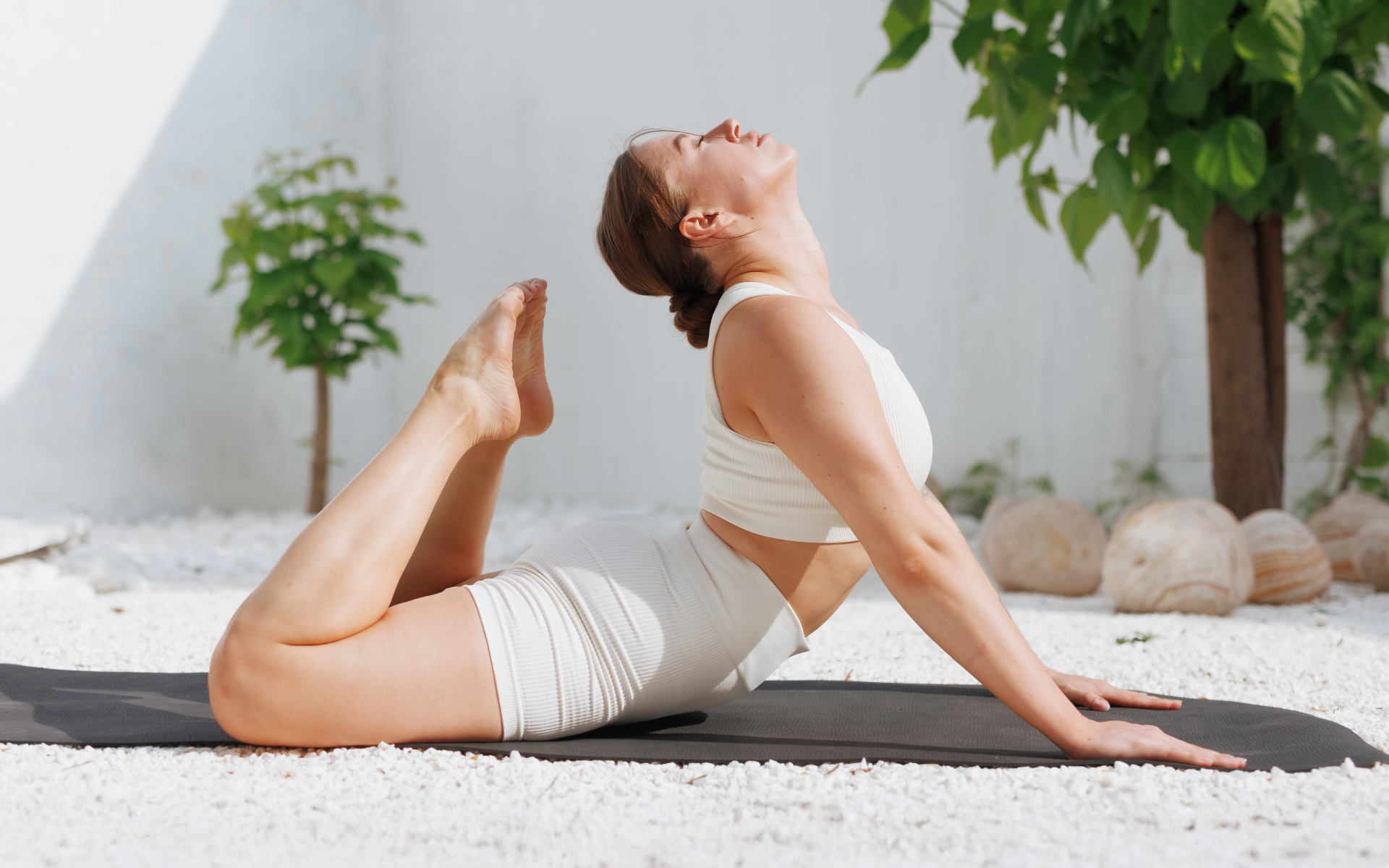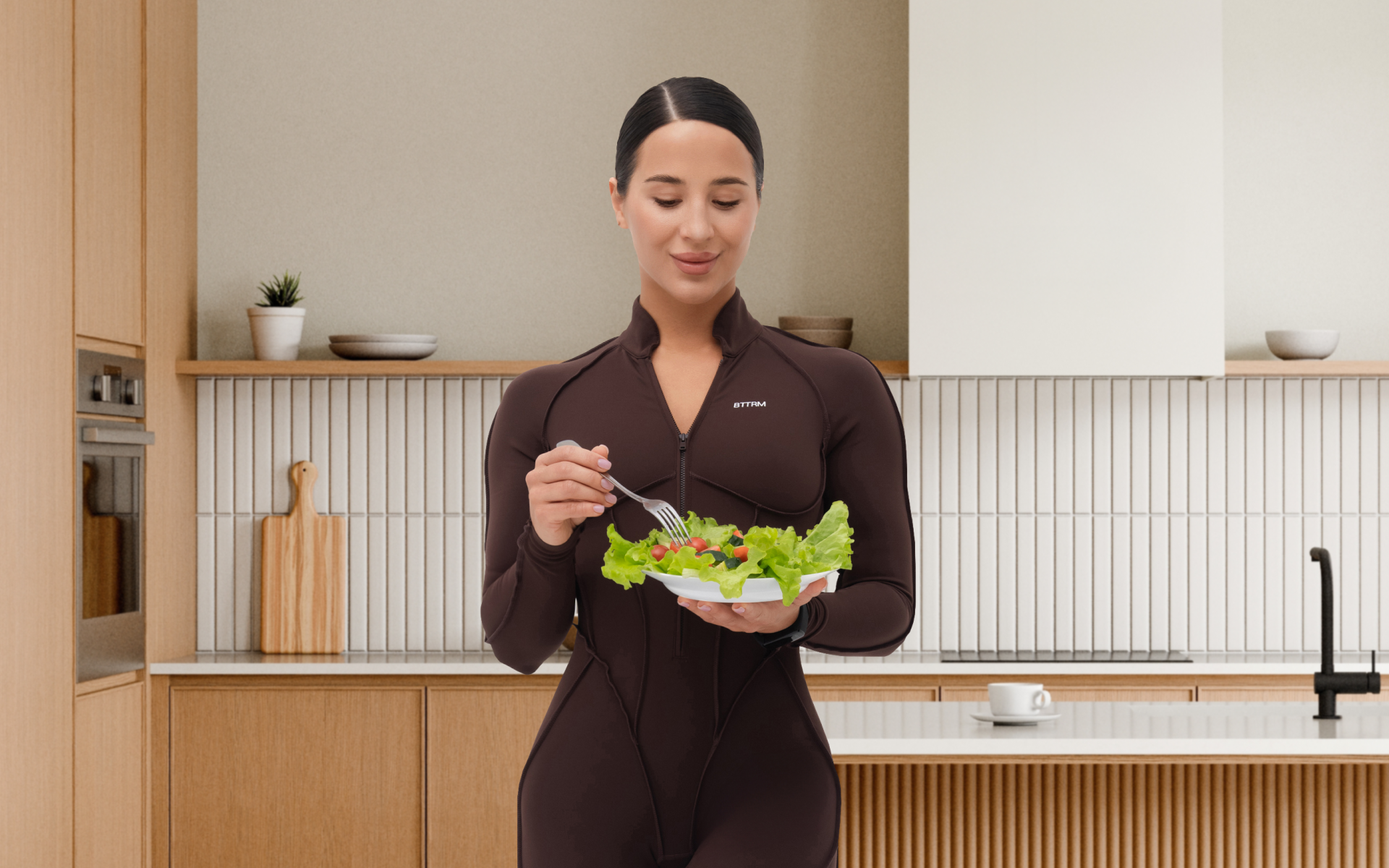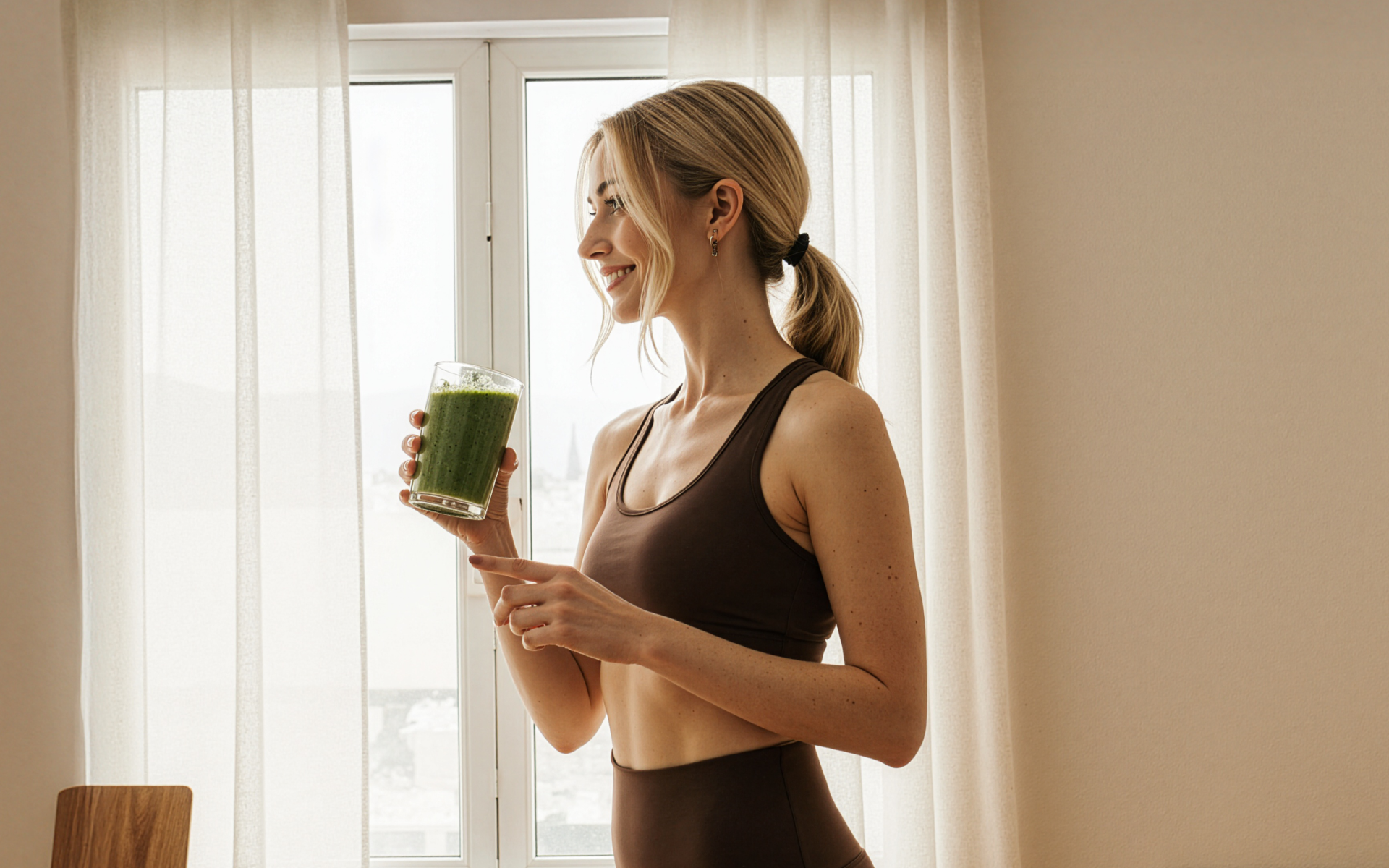Walking is one of the most approachable forms of exercise, but when weather, safety, or convenience concerns keep you indoors, the question becomes: can indoor walking deliver the same weight-management support ? More importantly, which apps can guide you toward sustainable results?
It isn’t just about which app tracks your steps best, it’s about understanding how indoor walking affects your wellness, what factors actually drive weight loss, and how technology can support your goals without creating unrealistic expectations.
Here’s what the science says about indoor walking for weight loss, the realistic role apps can play, and how to choose the right tools for your specific situation.
If you’re experiencing physical or mental health issues, you should consult a healthcare professional or physician.
Can I Lose Belly Fat Through Walking?
You can lose belly fat through walking, but not in the way most people think.
Walking doesn’t spot-reduce belly fat – no exercise does (1). Your body loses fat in a genetically predetermined pattern (2), and unfortunately, abdominal fat is sometimes the last to go. However, walking can absolutely contribute to overall fat loss, which will eventually include your midsection.
A study published in the Journal of Nutrition shows that moderate-intensity walking can significantly reduce total body fat when it’s combined with appropriate nutrition (3). A meta-analysis of 22 randomized controlled trials found that brisk walking for approximately 3 hours per week caused meaningful reductions in body weight, BMI, waist circumference, and fat mass in adults under 50 (4).
The mechanism is straightforward. Walking increases your energy expenditure. When you consistently burn more calories than you consume, your body taps into stored fat for fuel. The visceral fat around your organs, including belly fat, is metabolically active and responds well to sustained aerobic exercise such as walking (5).
Reasons why BetterMe is a safe bet: a wide range of calorie-blasting workouts, finger-licking recipes, 24/7 support, challenges that’ll keep you on your best game, and that just scratches the surface! Start using our app and watch the magic happen.
But here’s what many people miss: the intensity matters. A leisurely stroll burns calories, but brisk walking at 3-4 mph elevates your heart rate into the moderate-intensity zone where fat oxidation peaks (6, 7). This pace should feel challenging enough that you can talk, but couldn’t easily sing.
A study published in the Atherosclerosis Journal found that participants who walked at faster speeds showed greater risk reduction for cardiovascular disease and mortality (7). The faster the pace, the greater the metabolic benefits.
Do you want to dive deeper into structured walking programs? Check out our 28-day indoor walking weight loss challenge for a comprehensive approach to walking-based fat loss.
Can You Lose Weight with Indoor Walking?
Indoor walking can be just as effective as outdoor walking for weight loss, and in some cases, it offers distinct advantages.
The fundamental principle remains the same: create a consistent caloric deficit through increased energy expenditure (8). Whether you’re walking on a treadmill, following a video workout, or pacing around your living room, you’re burning calories and improving your metabolic well-being.
Indoor walking provides several unique benefits. You have complete control over your environment, which eliminates weather-related excuses. The consistent surface reduces the risk of injury compared to uneven outdoor terrain. You can also manipulate variables more precisely – adjusting speed, incline, and duration based on your fitness level and goals.
Treadmill walking allows for interval training, which research has suggested may be superior for fat loss. A study published in the Journal of Physical Activity and Health found that varying intensity throughout a walking session increased both caloric burn during exercise and excess post-exercise oxygen consumption (EPOC) – the calories you continue burning after your workout ends (9).
Home-based walking videos offer choreographed movements that engage different muscle groups, potentially increasing caloric expenditure compared to straightforward walking. These routines often incorporate lateral movements, arm swings, and step variations that activate stabilizing muscles.
Mall walking, which is popular among older adults, provides a climate-controlled environment with a flat, predictable surface. Studies have shown this form of indoor exercise to be safe, approachable, and effective for the support of cardiovascular health (10).
The key limitation of indoor walking isn’t physiological, it’s psychological. Some people find indoor environments less stimulating and enjoyable than outdoor settings (11). The monotony can affect adherence, which is essential for long-term weight loss success.
However, this is where technology can help. Apps, music, podcasts, and virtual walking programs can provide the mental stimulation that is needed to maintain consistency. The goal is to find what keeps you moving regularly, because the best exercise program is one you’ll actually follow.
For more structured indoor walking routines, explore our comprehensive indoor walking workout guide that includes beginner through advanced progressions.
Read more: How to Get 10,000 Steps a Day? Tips and Tricks
Are Indoor Walking Apps Worth It?
Indoor walking apps can be valuable tools, but they’re not magic solutions. Understanding what they can and can’t do will help you use them effectively.
What apps do well:
- Track basic metrics such as steps, distance, and estimated calorie burn
- Provide structured workout routines and progression plans
- Offer motivational features such as challenges and achievement badges
- Connect you with communities of like-minded users
- Send reminders to maintain consistency
- Store historical data to track long-term trends
What apps cannot do:
- Accurately measure your individual caloric expenditure (estimates can be off by 20-40%)
- Replace the need for proper nutrition planning
- Account for your unique metabolic rate and body composition
- Guarantee weight loss regardless of your overall lifestyle
- Provide personalized medical advice for underlying health conditions
The most effective apps combine tracking with education and community support. They help you build sustainable habits rather than just collecting data. Look for apps that encourage gradual progression, offer variety in workout formats, and provide realistic expectations about results.
Many apps overestimate calorie burn, particularly for walking (12). They use general equations that don’t account for your individual fitness level, body composition, or metabolic efficiency. Use their calorie estimates as rough guidelines rather than precise measurements.
The social features can be powerful motivators. Research has shown that people who engage with fitness communities through apps maintain higher activity levels over time (13). The accountability factor shouldn’t be underestimated.
However, you should avoid apps that promote unrealistic timelines or make grandiose promises about rapid weight loss. Sustainable weight loss occurs at a rate of 1-2 pounds per week (14), and walking alone typically contributes to gradual, steady progress rather than dramatic transformations.
The best app is one that fits seamlessly into your routine and keeps you engaged in the long term. Whether that’s a simple step counter or a comprehensive fitness platform depends on your personality, goals, and preferences.
What Is the Best Indoor Walking App for Weight Loss?
After evaluating numerous platforms based on scientific principles, user engagement, and realistic weight loss support, comprehensive health coaching apps that go beyond simple step tracking are recommended.
The BetterMe Health Coaching App stands out for several reasons. Unlike basic pedometer apps, it provides structured indoor walking programs designed specifically for weight loss. The app includes professionally designed workout routines that progress systematically, which helps you avoid plateaus and maintain motivation.
What makes BetterMe particularly effective is its integration of walking with nutrition guidance and behavioral coaching. Weight loss requires more than just increased activity – it demands a coordinated approach that addresses diet, exercise, and lifestyle habits. The app’s holistic framework acknowledges this reality.
BetterMe’s indoor walking programs cater to different fitness levels, from complete beginners to those who are looking for more challenging routines. The workouts incorporate interval training principles, varying the intensity to maximize caloric burn and metabolic benefits. This approach aligns with research showing that varied-intensity exercise is superior to steady-state activity for body composition changes.
The app also provides realistic timeline expectations and progress tracking that goes beyond simple weight measurements. It monitors energy levels, sleep quality, and other health markers that contribute to successful weight management.
BetterMe’s educational component is valuable too. Many people start walking programs without understanding proper form, appropriate progression, or how to integrate walking into a comprehensive weight loss strategy. The app addresses these knowledge gaps.
The community features foster accountability without creating unhealthy competition. Users can share experiences and challenges while receiving support from other people who are on similar journeys.
If you’re ready to start a structured indoor walking program, you can explore BetterMe’s specialized indoor walking weight loss program that’s designed to provide comprehensive support for your fitness goals.
Remember, the best app is one you’ll actually use consistently. Consider your preferences for interface design, coaching style, and feature complexity when making your choice.
Read more: 4 Week Walking Plan for Beginners: Schedule, Tips and FAQ
Does the 28-Day Walking Challenge Really Work?
Short-term challenges can be effective catalysts for establishing long-term habits, but their success depends on how they’re structured and what happens afterward.
- Psychological Benefits of Time-Limited Challenges
28 days represents a sweet spot for habit formation. Research in behavioral psychology has suggested that new behaviors require consistent repetition over several weeks to become automatic (15). A 28-day framework provides enough time to develop a routine while remaining psychologically manageable.
The defined endpoint creates urgency and focus. Instead of committing to walking “forever”, you’re committing to 28 days. This reduced cognitive load makes it easier to start and maintain momentum during the initial period when motivation is highest.
Challenges also provide clear structure and progression. Rather than wondering what to do each day, you follow a predetermined plan. This reduces decision fatigue and eliminates the daily negotiation about whether to exercise.
BetterMe: Health Coaching app helps you achieve your body goals with ease and efficiency by helping to choose proper meal plans and effective workouts. Start using our app and you will see good results in a short time.
- Physiological Adaptations in Four Weeks
From a physiological standpoint, 28 days is enough to see meaningful changes in cardiovascular fitness and metabolic function. Research has shown that sedentary individuals can experience improvements in aerobic capacity within weeks of starting a walking program (16).
However, weight loss in 28 days requires realistic expectations. A well-designed walking program may contribute to 2-8 pounds of weight loss over four weeks, depending on your starting point, intensity, and dietary habits. Most of the early weight loss will be water weight and glycogen depletion rather than fat loss (17).
The real physiological benefit is improved exercise capacity and metabolic efficiency. After 28 days of consistent walking, you’ll likely notice increased energy levels, better sleep quality, and improved mood regulation – benefits that support long-term weight management (16).
- Habit Formation and Long-Term Success
The true value of a 28-day challenge lies in habit development. Consistency during this period helps establish walking as a non-negotiable part of your daily routine. The key is to design the challenge to be challenging but achievable.
Effective challenges include gradual progression rather than immediately jumping into high-intensity routines. They also provide flexibility for different schedules and fitness levels, which reduces the likelihood of giving up due to unrealistic demands.
The transition from challenge to lifestyle is crucial. Many people complete 28-day programs successfully, but revert to previous habits immediately afterward. The best challenges include strategies for maintaining momentum beyond the initial period.
- Setting Realistic Expectations
A 28-day walking challenge works best when it’s viewed as the beginning of a longer journey rather than a complete transformation. It can establish the foundation for sustainable habits, improve baseline fitness, and provide initial weight loss momentum.
However, it won’t revolutionize your body composition or solve complex wellness issues in four weeks. Sustainable weight loss and fitness improvements require months and years of consistent effort (18), not just a single month-long sprint.
The most successful participants use the 28-day period to experiment with different walking routines, identify what works for their schedule, and build confidence in their ability to maintain regular exercise habits.
For a comprehensive approach to walking-based fitness, you should consider exploring additional indoor exercise options that can complement your walking routine and provide variety as you progress beyond the initial challenge period.
A flat tummy walk is a walking routine that is specifically designed to engage the core muscles and promote abdominal fat loss. This typically involves maintaining proper posture, engaging your core throughout the walk, and incorporating breathing techniques or arm movements that activate the abdominal muscles. While no walk can specifically target belly fat, this type of routine may increase overall caloric burn and improve core strength, contributing to better posture and muscle tone. Walking provides modest glute activation, particularly when it’s done uphill or on an incline (19). However, regular flat-surface walking primarily engages the glutes as stabilizing muscles rather than providing a significant strengthening stimulus. For meaningful glute toning, you need to incorporate hill walking or stair climbing, or add resistance exercises to your routine. Walking can help reduce overall body fat, which may make existing muscle definition more visible. Walking 2 miles daily can contribute to overall weight loss, which will eventually include belly fat reduction. 30 minutes of brisk walking burns approximately 100-200 calories, depending on your weight and pace (20). Over time, this consistent caloric expenditure can support a caloric deficit that is necessary for fat loss. However, spot reduction of belly fat isn’t possible through any exercise, and results will be heavily dependent on your overall diet and lifestyle habits. Walking 30 minutes daily for a month can produce several noticeable changes. You may experience improved cardiovascular endurance, better sleep quality, increased energy levels, and a modest weight loss of 2-4 pounds when you combine it with healthy nutrition. Your resting heart rate may decrease, and you’ll likely notice improved mood and stress management. The exact changes depend on your starting fitness level, walking intensity, and overall lifestyle factors.Frequently Asked Questions
What is a flat tummy walk?
Does walking tone your butt?
Will walking 2 miles a day help lose belly fat?
What happens if you walk 30 minutes a day for a month?
The Bottom Line
Indoor walking apps can be valuable tools on your weight loss journey, but they work best when they’re integrated into a comprehensive approach that includes proper nutrition, realistic expectations, and long-term thinking.
The most effective strategy combines the convenience and structure that apps provide with an understanding of exercise physiology and sustainable habit formation. You should focus on consistency over intensity, gradual progression over dramatic changes, and building sustainable routines over quick fixes.
Choose tools that are aligned with your preferences and lifestyle, but don’t let the search for the perfect app delay your start. The best walking program is one you start today and maintain consistently over time.
DISCLAIMER:
This article is intended for general informational purposes only and does not serve to address individual circumstances. It is not a substitute for professional advice or help and should not be relied on for making any kind of decision-making. Any action taken as a direct or indirect result of the information in this article is entirely at your own risk and is your sole responsibility.
BetterMe, its content staff, and its medical advisors accept no responsibility for inaccuracies, errors, misstatements, inconsistencies, or omissions and specifically disclaim any liability, loss or risk, personal, professional or otherwise, which may be incurred as a consequence, directly or indirectly, of the use and/or application of any content.
You should always seek the advice of your physician or other qualified health provider with any questions you may have regarding a medical condition or your specific situation. Never disregard professional medical advice or delay seeking it because of BetterMe content. If you suspect or think you may have a medical emergency, call your doctor.
SOURCES:
- A proposed model to test the hypothesis of exercise-induced localized fat reduction (spot reduction), including a systematic review with meta-analysis (2021, hummov.awf.wroc.pl)
- Genetics of Exercise and Diet-Induced Fat Loss Efficiency: A Systematic Review (2024, pmc.ncbi.nlm.nih.gov)
- Moderate Walking Enhances the Effects of an Energy-Restricted Diet on Fat Mass Loss and Serum Insulin in Overweight and Obese Adults in a 12-Week Randomized Controlled Trial (2017, sciencedirect.com)
- The Influence of Age, Sex and Body Mass Index on the Effectiveness of Brisk Walking for Obesity Management in Adults: A Systematic Review and Meta-Analysis (2017, pubmed.ncbi.nlm.nih.gov)
- The Regulation of Fat Metabolism during Aerobic Exercise (2020, pmc.ncbi.nlm.nih.gov)
- Walking for health (2022, nhs.uk)
- Walking pace is inversely associated with risk of death and cardiovascular disease: The Physicians’ Health Study (2019, pmc.ncbi.nlm.nih.gov)
- Optimal Diet Strategies for Weight Loss and Weight Loss Maintenance (2020, pmc.ncbi.nlm.nih.gov)
- Speed- and Circuit-Based High-Intensity Interval Training on Recovery Oxygen Consumption (2017, pmc.ncbi.nlm.nih.gov)
- Indoor Physical Activity Reduces All-Cause and Cardiovascular Disease Mortality Among Elderly Women (2012, pmc.ncbi.nlm.nih.gov)
- Full article: Acute effects of outdoor versus indoor exercise: a systematic review and meta-analysis (2024, tandfonline.com)
- Calorie Estimation in Adults Differing in Body Weight Class and Weight Loss Status (2016, pmc.ncbi.nlm.nih.gov)
- Examining the impacts of fitness app features on user well-being (2023, sciencedirect.com)
- Steps for Losing Weight | Healthy Weight and Growth (2025, cdc.gov)
- Time to Form a Habit: A Systematic Review and Meta-Analysis of Health Behaviour Habit Formation and Its Determinants (2024, pmc.ncbi.nlm.nih.gov)
- The multifaceted benefits of walking for healthy aging: from Blue Zones to molecular mechanisms (2023, link.springer.com)
- Weight-Loss and Maintenance Strategies – Weight Management (2004, ncbi.nlm.nih.gov)
- Maintenance of lost weight and long-term management of obesity (2018, pmc.ncbi.nlm.nih.gov)
- Comparison of the Activity of the Gluteus Medius According to the Angles of Inclination of a Treadmill with Vertical Load (2014, pmc.ncbi.nlm.nih.gov)
- Calories burned in 30 minutes of leisure and routine activities (2022, health.harvard.edu)
